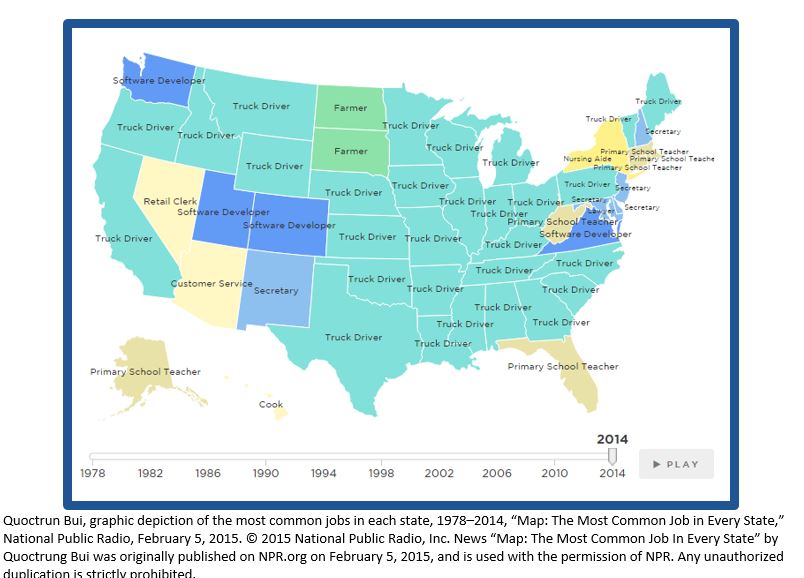12th Grade Economics Labor Market Inquiry
Does It Matter What I Want to Be When I Grow Up?
Download Entire Inquiry Here

Does It Matter What I Want to Be When I Grow Up?
Download Entire Inquiry Here
Staging the Compelling Question
Stage the compelling question by having students fill out a job interest inventory and make a list of suitable and interesting career possibilities. There are many tools available for students to survey their interests and career matches, but one survey possibility is the Student Interest Survey for Career Clusters on the CTE website: http://www.careertech.org/student-interest-survey.
Stage the compelling question by having students fill out a job interest inventory and make a list of suitable and interesting career possibilities. There are many tools available for students to survey their interests and career matches, but one survey possibility is the Student Interest Survey for Career Clusters on the CTE website: http://www.careertech.org/student-interest-survey.
Supporting Question 1- What economic trends have influenced labor market demand?
- Source A: Quoctrun Bui, graphic depiction of the most common jobs in each state, 1978–2014, “Map: The Most Common Job in Every State,” National Public Radio, February 5, 2015.
- Source B: United States Bureau of Labor Statistics, data table describing employment trends, “Fastest Growing Occupations, 2012 and projected 2022,” December 19, 2013.
- Source C: David Autor, report on the labor market, The Polarization of Job Opportunities in the U.S. Labor Market: Implications for Employment and Earnings (excerpt), Brookings Institute, April 2010
© The Brookings Institution. Used with permission. The full report can be found at http://www.brookings.edu/~/media/research/files/papers/2010/4/jobs-autor/04_jobs_autor.pdf.
Supporting Question 2- How are producers affected by labor market supply?
- Source A: Charley Stone, Carl Van Horn, and Cliff Zukin, summary of report on college attendance and labor, Chasing the American Dream: Recent College Graduates and the Great Recession (excerpt), Rutgers University, May 2012 John J. Heldrich Center for Workforce Development, Edward J. Bloustein School of Planning and Public Policy at Rutgers University. Used with permission. The full report can be found at http://www.heldrich.rutgers.edu/sites/default/files/products/uploads/Chasing_American_Dream_Report.pdf.
- Source B: Paul Krugman, editorial on the labor market, “Jobs and Skills and Zombies,” New York Times, March 30, 2014 From The New York Times, March 30, 2014. © 2014 The New York Times. All rights reserved. Used by permission and protected by the Copyright Laws of the United States. The printing, copying, redistribution, or retransmission of this Content without express written permission is prohibited.
Supporting Question 3- How do market forces interact to create wage-price equilibrium?
- Source A: Federal Reserve Bank of St. Louis, instructive video on labor market demand and supply, The Labor Market—The Economic Lowdown Video Series, Episode 4, no date.
- Source B: Quoctrung Bui, graphic depiction of the most common jobs in each state, 1978–2014, “Map: The Most Common Job in Every State,” National Public Radio, February 5, 2015. NOTE: This source is the same as that in Supporting Question 1A. It contains an interactive map that is best viewed online at http://www.npr.org/sections/money/2015/02/05/382664837/map-the-most-common-job-in-every-state
- Source C: United States Bureau of Labor Statistics, summary report on jobs outlook, “Heavy and Tractor-trailer Truck Drivers Job Outlook” (excerpt), Occupational Outlook Handbook, 2014–15 Edition, January 8, 2014